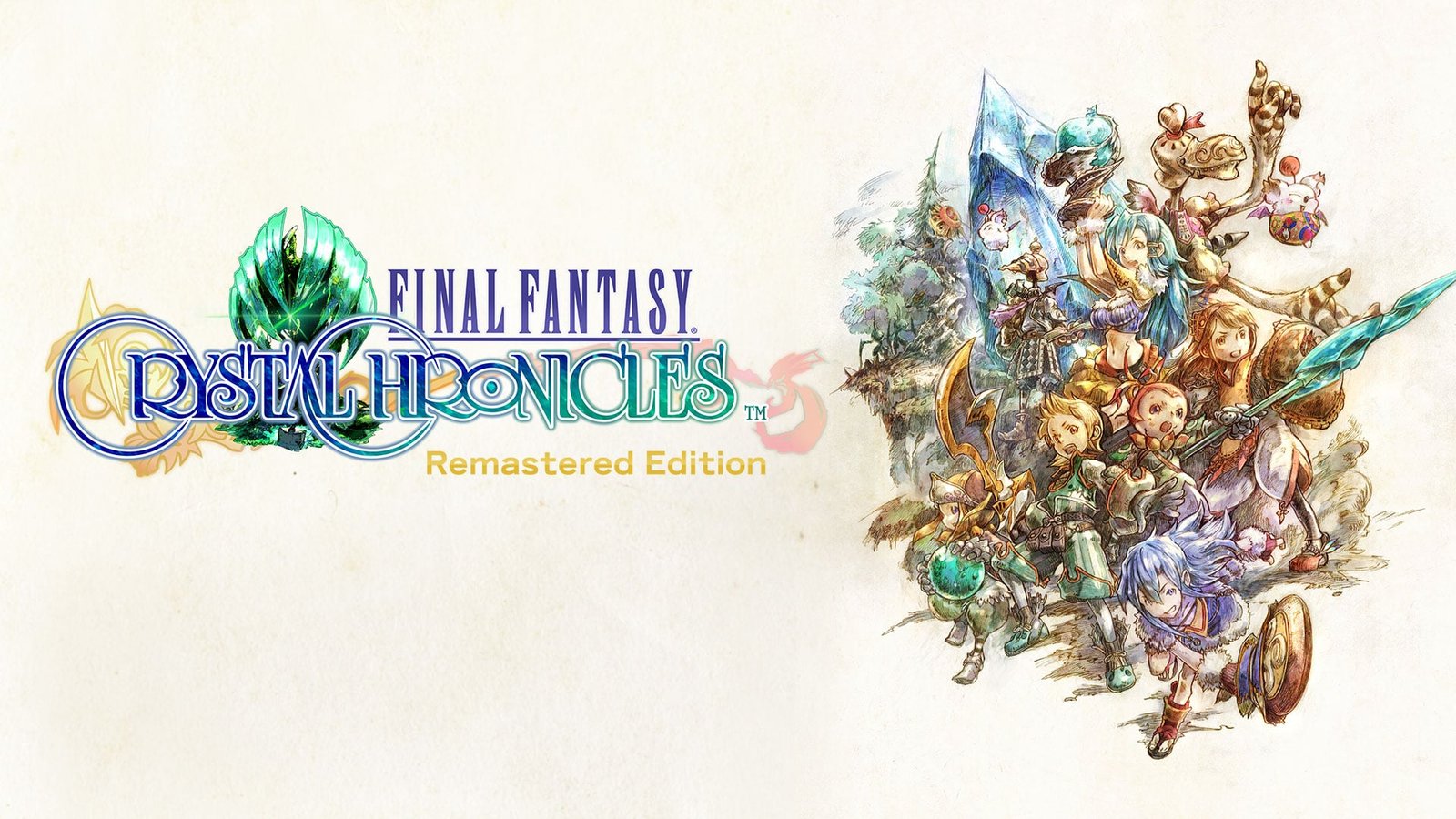It’s interesting that you can consider yourself a fan of a series like Final Fantasy — in my case, for decades — and still not have come anywhere close to experiencing everything it has to offer. Although I played my very first Square Enix title in 1991 at the ripe old age of five (back when it was still Square/Squaresoft), there are numerous classics over the years that I’ve yet to play, including Xenogears, Vagrant Story, and even a handful of Dragon Quest games. A disgrace, I know.
I also missed completely out on the entire Final Fantasy Crystal Chronicles subseries that, while not necessarily considered a mainstream classic, does have a healthy cult following. Debuting on the Nintendo Gamecube in 2003, the series would eventually go on to release a slew of titles thereafter thanks in part to the continual, combined efforts of Kumi Tanioka (music), Toshiyuki Itahana (art), and Akitoshi Kawazu (director/producer/overseer, of SaGa fame). As a massive fan of another quirky Square series, SaGa, Kawazu's involvement alone was enough to get me excited for the release of Final Fantasy Crystal Chronicles Remastered Edition in August of 2020.
Now that it is here and available for download (on iOS, Android, PlayStation 4, and Nintendo Switch), what are my thoughts?
Well…for a game that encourages multiplayer, this version is certainly more accessible than ever (thanks to its multi-platform release) but has the potential to be even more frustrating than its original limitations due to some puzzling design decisions.
As a forewarning, these impressions are primarily based from a solo player’s perspective, but there’s an unfortunate reason for that which will be discussed in detail later.
The Story Driving Final Fantasy Crystal Chronicles
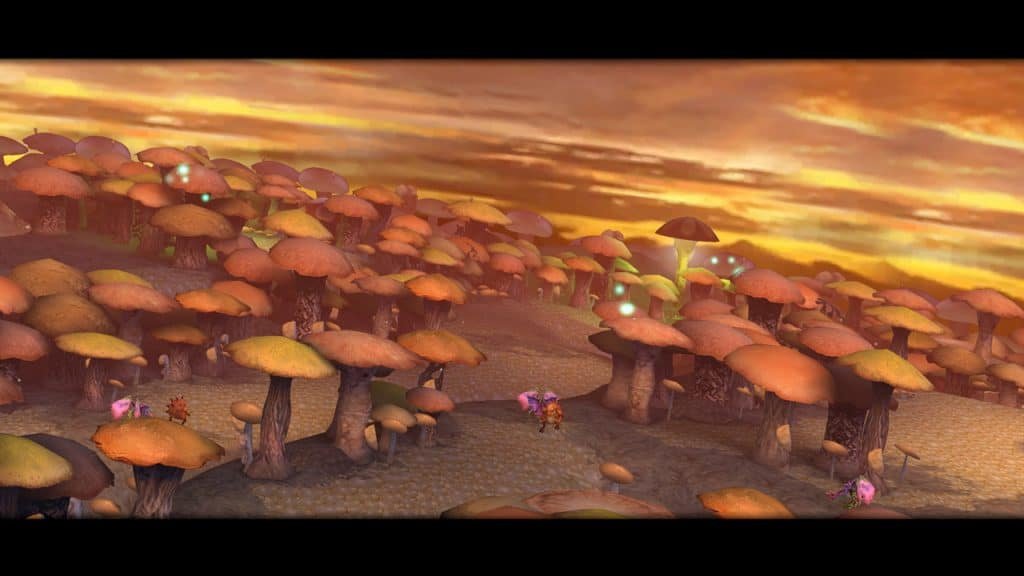
Final Fantasy Crystal Chronicles Remastered Edition takes place in a ruined world. A millennia ago, the essence of the world (a crystal) was destroyed by an otherworldly entity. A byproduct of this was miasma, a deadly toxin that quickly blanketed the world, essentially rendering 99% of it uninhabitable. Survivors of this eventually discovered that fragments of their now shattered crystal could stop the spread of miasma in a small radius and allow life to persist.
The power of these crystal fragments were finite, however, and required the frequent infusion of myrrh in order to maintain its miasma-thwarting properties. Myrrh is a pure essence from very specific (and limited) trees, so caravans of adventurers would very carefully set out on pilgrimages to these trees. In theory, they would then bring back the precious myrrh to the crystal fragments in their respective dwellings and stave off the miasma for a little while longer.
Make no mistake, the hand dealt to the inhabitants of this world is grim. It's a stark contrast to the game’s colorful art style and frequent use of moogles for comedic relief. Even so, you feel the presence of miasma in literally every step you take because of the repercussions incurred should you stray too far from sanctuary.
The ever-present threat of miasma and how the player, a caravanner, adapts to it results in a simple, yet satisfying premise that is arguably one of the best aspects of the game.
Character Creation and Trade
Before the adventure can begin, the player must create their character from one of four races, and select a family trade, with the nuances of each suffering from a general lack of (in-game) information. There are pros/cons to each race and some of them are better suited to tackle solo content while others rely a little more on a structured group to thrive. Everything is likely still viable, regardless of playstyle, but knowing of these bonuses naturally would certainly help those that like to make informed decisions.
The family trades act as professions that can be leveled up over the course of the adventure. Like race bonuses, unfortunately, it isn't entirely clear (in-game) how to actually make that happen. Moreover, some trades have clear advantages over others, particularly if you intend to focus on a certain type of play (solo or multiplayer). Fortunately, you can create up to eight characters to inhabit your starting hub, and pairing different trades with each will eventually allow access to all trades…though you'll have to improve them before they're really useful.
With a character selected, the next step is to hop in your caravan and seek out the coveted myrrh found in dungeons. While the ultimate goal remains the same whether you play alone or with friends, the actual gameplay loop is a bit different depending on your choice.
Dungeon Diving
Upon entering a dungeon solo, the player will be accompanied by a moogle that is capable of very limited offensive actions but is far better suited at simply holding the myrrh chalice. Yes, the vessel of myrrh must be carried with you at all times, creating a protective aura that will prevent the miasma from overwhelming you. Although the player is free to carry the chalice also, the moogle’s limited toolkit, again, makes them a much better candidate for such a task. The moogle will cry out in agony from time to time because “they are tired,” but it is easier to just ignore their plea and continue on with your adventure.
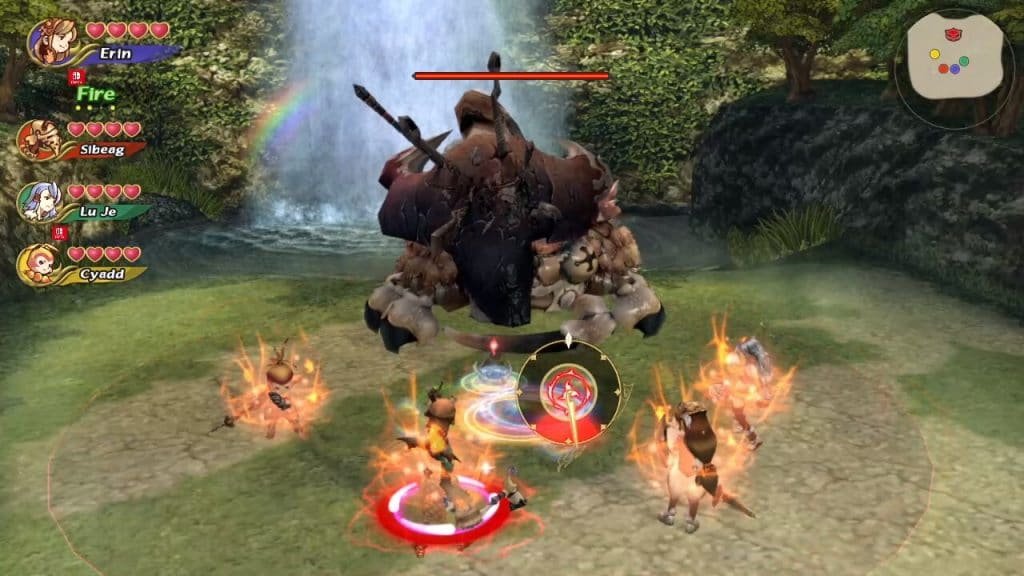
The chalice is not as big of an issue in multiplayer since one player will always be dedicated to holding the chalice – your trusty moogle companion is nowhere to be found when among other caravanners. But the question remains: who actually wants to be the chalice bearer?
While I recognize the purpose of the chalice as essential in the lore itself, the Remastered Edition should have allowed for moogle to also carry it into multiplayer so that all four player-controlled characters could do something more exciting. Instead, someone gets to carry a cup around a dungeon. Fan-freaking-tastic.
Dungeons are filled with monsters, treasures, and some light puzzles, with a boss serving as an end cap for any given run. Upon completing it, artifacts collected along the way (and acquired by the boss) will come up for grabs as a single, permanent bonus that you can choose from once per run.
Artifact benefits range from improved stats, increased health, additional command (or action) list slots, and more. Fulfilling a set bonus objective for each run will award players bonus points which will govern the artifacts dropped by the boss (to an extent), as well allowing the player with the highest points in multiplayer the opportunity to pick the first artifact.
Combat
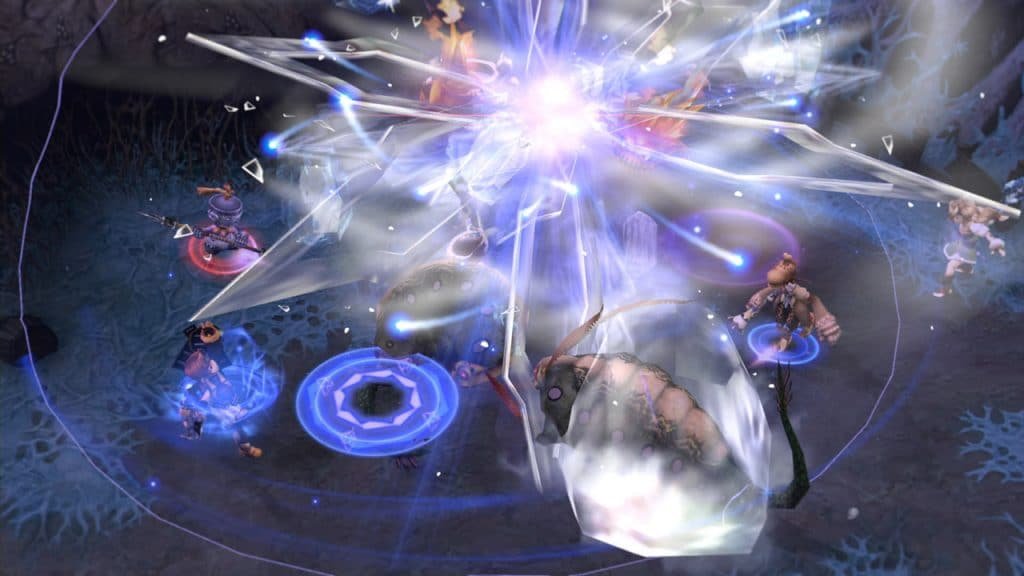
Combat-wise, the player has access to melee attacks and spells, with the former composed of combo and focus attacks while the latter can be combined in a multiplayer setting to make brand-new, potentially more powerful spells. Solo players will have it the roughest here, as it is immediately obvious that virtually everything but the most basic of attacks are best suited for multiplayer where the sheer number of players (thus distractions) make opportunities for charge-based attacks (aka focus and offensive spells) far more viable. For me, sticking to the basic three-hit combo and occasionally using “cure” magic was all that was really necessary for solo play.
None of this was really fun, though. Because not only was the whole combat loop literally basic hack and slash gameplay, it also suffered from a slight input lag, further discouraging anything but the most basic attack patterns. Dungeons level up over time, offering new rewards and more dangerous creatures, but the appeal of diving into these multiple times wears thin quickly once you realize the overall trivial level of difficulty and general, dull gameplay loop. While I'm admittedly nowhere near the point that I can test the reportedly more difficult post-game content, challenge shouldn't be gated behind rolling credits, either.
This is further exacerbated for multiplayer parties with how story progression is handled. Players won’t receive credit for story progression (read: can't collect the myrrh) unless they are the host of the party, meaning a dedicated party of four could very well have to run each dungeon four times in order for everyone to receive full story credit.
For a game that emphasizes group play, this is an obvious slap in the face, seeing as the already trivial content will become even more of a cakewalk after having to repeat it just for the sake of getting the entire party up to speed. The lack of difficulty, again, may not be an issue in the post-game, but you have a lot – and I mean a lot – of dungeoneering to do before you can get to that point, especially in multiplayer.
I've heard that there is a potential workaround for the multiplayer progression gate, but the fact that there has to be a workaround at all is an issue in itself. For me, this makes solo play even more appealing despite the fact that the journey is much lonelier, and you have to listen to moogle cry about carrying a cup.
While cross-platform multiplayer is a nice, modern touch here, there is still a void left by the absence of local (or couch co-op) multiplayer. This was likely cut due to time/budget constraints, but its inclusion would have certainly been a boon for many players. In other words, one must get online in order to play with someone else…unless you received an early copy (like me) and couldn't connect at all.
After trying to connect for almost a week, it was discovered that early review copies had to delete their current saves in order to dive into the multiplayer. Is this a joke? Unfortunately, the joke’s on me because I literally had to choose between continuing my 15-hour adventure, forever alone, or starting completely from scratch in order to have any chance to play with someone else. Well played, Square Enix.
It is amazing that with the success of both Final Fantasy XIV and XI, SE wouldn't have this kind of problem making multiplayer work. In the Gamecube era, understandable. But with this remaster, there is no excuse.
Additional Activities
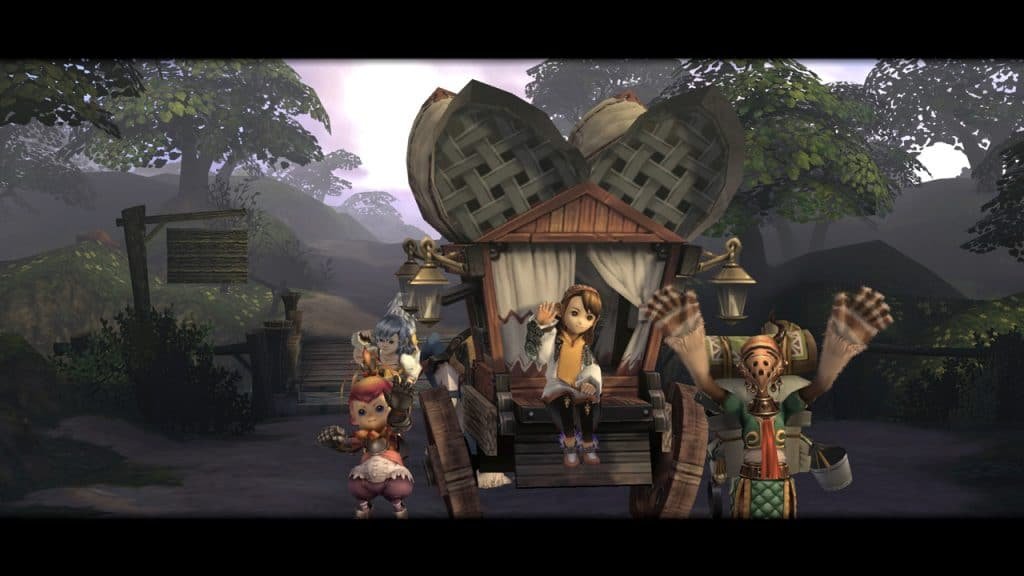
Outside of the dungeon grind, players in Final Fantasy Crystal Chronicles Remastered Edition can scour the globe for stamps that are provided by moogles found in obscure places, help improve their family trade (in an overly convoluted manner), and witness seemingly random events during travel.
None of these are all that exciting, though it seems that some of the best equipment can be acquired through family trades. If you have the tenacity to figure out how to improve them, that is. The random events do add just a bit of depth to the game world itself, as well as also occasionally providing you with items. But in general, they aren’t really anything to write home about.
Graphics, Performance, and Sound
Final Fantasy Crystal Chronicles Remastered Edition appears to faithfully enhance the graphical framework laid out by its original rendition, with an obvious increase in fidelity while maintaining its hyper stylized art style. While the character and enemy models do look nice, the overall design and layout of many dungeons leaves much to be desired and could have benefited from some additional prop/object placement.
The proposed extra eye candy could have done more harm than good, however, for Final Fantasy Crystal Chronicles Remastered Edition already suffers from an inconsistent framerate at times. This can occasionally shine even more light on the aforementioned input lag issue. The game also has frequent, long loading times that make traveling from one area of the map to another a bit of a chore, especially if you happen across a few random events in the process.
The sound in general fares far better than the performance woes, though your mileage will vary on the addition of voice acting in this version. Music, is done quite well, just like in most Final Fantasy and other Square Enix games. And based on discussions with some of the other Geek to Geek folks, songs will be stuck in your head long after you stop playing the game.
Conclusion
To me, Final Fantasy Crystal Chronicles Remastered Edition feels like a game that would have been better suited for a full-on remake rather than a remaster, but I understand that is a tall order. Kawazu is no stranger to having his works denied access, especially in the West, but there are clear issues here that make the experience feel dated, and not in a nostalgic way. (You expect an HD remaster of a GameCube game to be a bit dated.)

The progression-based limitations of multiplayer in this version, in ways, work against that style of play, making the single player experience seem more appealing. Unfortunately, it really isn’t (mechanically speaking). Instead, players that want to experience the game with a dedicated group will potentially have to run each bit of content four times over, which is simply unacceptable.
The remake approach also could have ushered in the aforementioned moogle chalice holder in multiplayer, allowing the actual players more freedom to do things that are actually interesting. Not just carry a cup around. Even then, there are further underlying issues, (such as input lag and lack of excitement in combat) that would continue to plague the overall experience. For me, anyway.
That said, I’ve been hearing about some other caravans out there that have found joy in Final Fantasy Crystal Chronicles Remastered, and that is great! The game certainly has an interesting premise, and it has potential to be enjoyable from a multiplayer standpoint (again, if you don’t mind potentially repeating static content ad nauseam).
We know that the company is capable of making fantastic remakes and remasters, so I hope that any others that Square Enix have in the pipeline can get the FF7R treatment instead of the FFCC one.
For me, however, there are far better games out there on Switch that can fill that RPG or multiplayer experience. Diablo III, Borderlands, Minecraft Dungeons, and Torchlight II immediately come to mind and they offer a much more enjoyable gameplay loop. The FFCC Remastered Edition isn't necessarily bad. It's just not necessarily good, either.
Have you jumped into Final Fantasy Crystal Chronicles Remastered Edition yet? If so, what are your own impressions? Have you run into the same issues that I outlined above? I hope not, but let me know either way!

